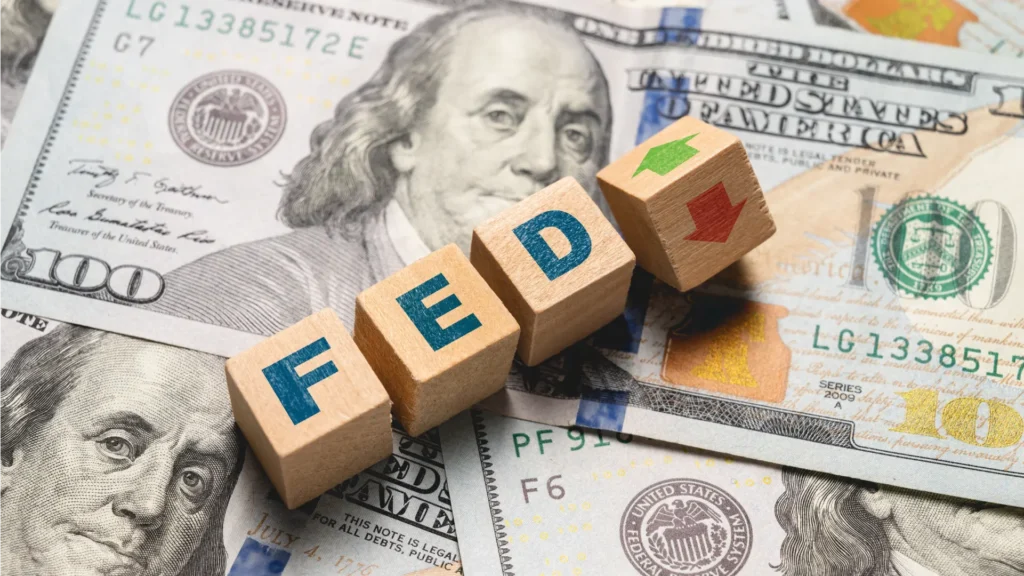
The interest rate hikes in the United States are having a profound impact on the economy, particularly in the realm of investments. As the Federal Reserve continues to raise interest rates in an effort to combat inflation, investors and businesses alike are feeling the effects. Higher interest rates make borrowing more expensive, which slows down economic activity, but they also affect the returns on different types of investments, from stocks to bonds and real estate.
For many investors, the era of ultra-low interest rates seems to be coming to an end. This shift in monetary policy is forcing individuals and businesses to reevaluate their strategies, balancing risk and reward in an uncertain environment. The interest rate hikes are influencing decisions about where to allocate capital, how to approach new investments, and what to expect from returns in the future.
In this article, we’ll dive into how rising interest rates are shaping U.S. investments, looking at their effects on stocks, bonds, real estate, and business growth.
Impact interest rate on the Stock Market
The interest rate hikes have introduced a new level of volatility to the U.S. stock market. Historically, higher interest rates tend to negatively affect stock prices, particularly for growth-oriented companies that rely on borrowing to fuel expansion. As borrowing costs rise, these companies may cut back on investment in new projects, and their stock prices can decline as a result. Investors are also more likely to shift their portfolios toward safer, income-generating assets like bonds when interest rates rise.
Tech stocks, in particular, have been hit hard by the recent interest rate hikes. These companies often depend on cheap capital to finance innovation and growth, and when rates increase, their valuations tend to drop. Additionally, higher rates reduce the present value of future earnings, which can lead to lower stock prices overall.
However, some sectors of the market, such as financials, tend to benefit from rising rates. Banks and other financial institutions often see their profit margins increase as interest rates rise, making them attractive investments during periods of interest rate hikes. Investors looking to hedge against stock market volatility may consider diversifying their portfolios with these types of investments.
Shifting Dynamics in the Bond Market
The bond market is directly impacted by interest rate hikes, and the relationship between interest rates and bond prices is an inverse one. As rates rise, the price of existing bonds tends to fall because newer bonds offer higher yields, making older bonds less attractive. This creates a challenging environment for bond investors, particularly those holding long-term bonds.
However, the rising interest rates also present new opportunities in the bond market. For investors looking for stable, low-risk returns, new bonds with higher yields can be appealing. The challenge lies in timing; investors must balance the potential losses on existing bonds with the opportunity to capitalize on higher yields from new bond issuances.
Short-term bonds are generally less affected by interest rate hikes, making them a safer option during periods of rising rates. Investors are shifting their strategies by focusing more on short-duration bonds, which are less sensitive to changes in interest rates. Overall, while the bond market is volatile in the short term, it can still offer opportunities for those who carefully navigate the effects of interest rate hikes.
Real Estate and the Cost of Borrowing
Real estate is another sector feeling the effects of the interest rate hikes. Higher interest rates mean more expensive mortgages, which has slowed down home buying activity in many parts of the U.S. The housing market, which saw explosive growth during the pandemic, is now cooling off as higher borrowing costs deter both new buyers and investors.
For potential homeowners, the interest have made it more difficult to afford homes, as higher mortgage rates can significantly increase monthly payments. This shift has led some buyers to hold off on purchasing property, waiting for rates to stabilize. In turn, this has caused a softening in demand for homes, particularly in areas where prices surged during the pandemic.
Investors in commercial real estate are also feeling the pinch of interest. Higher borrowing costs mean that financing new developments or acquiring properties has become more expensive. This could lead to a slowdown in commercial real estate investment as companies reassess the profitability of new projects under tighter monetary conditions.
Business Growth and Investment Decisions
For businesses, the interest have made borrowing more expensive, which affects everything from expansion plans to daily operations. Companies that rely heavily on debt to fund growth are being forced to reconsider their strategies as higher rates cut into profits and increase the cost of capital.
Small businesses, in particular, are vulnerable to the effects of interests rate hikes. Many small firms depend on loans to cover operating expenses, invest in new equipment, or expand their operations. As borrowing costs rise, these businesses may be forced to delay expansion plans or cut back on spending, which could slow overall economic growth.
Larger corporations are also facing difficult decisions as a result of interest. In addition to higher borrowing costs, they are dealing with increased input costs and wage pressures. These factors are leading some companies to prioritize cost-cutting measures, such as layoffs or reduced capital expenditure, over growth initiatives.
Conclusion
The interest rate hikes in the U.S. are reshaping the investment landscape, affecting everything from stock prices to bond yields and real estate values. For investors, navigating this new environment requires a careful balance between risk and reward, as rising rates introduce volatility and uncertainty. Businesses, too, are feeling the effects, with higher borrowing costs influencing growth strategies and investment decisions.
As the Federal Reserve continues to adjust rates, investors and companies will need to stay nimble, adapting to the challenges and opportunities that come with a rising rate environment. While interest rate hikes can create headwinds for certain sectors, they also present new opportunities for those who are prepared to shift their strategies accordingly.
Antonio Maracas
Como escritor, minha paixão é transformar ideias em palavras que ressoam com os leitores.
